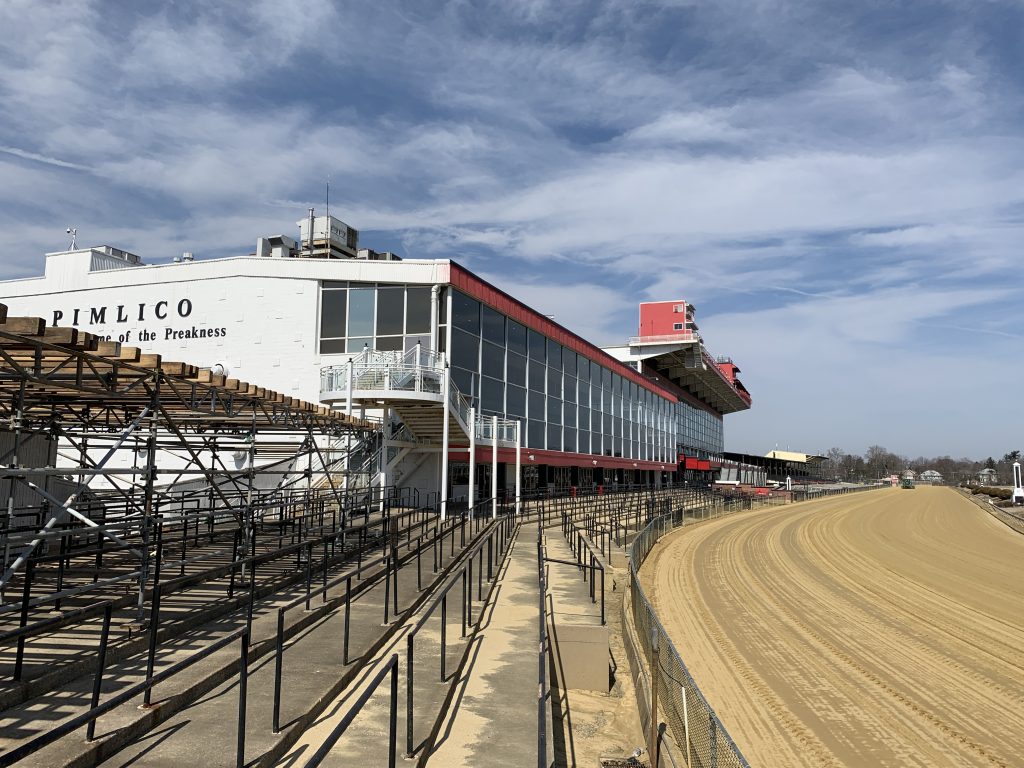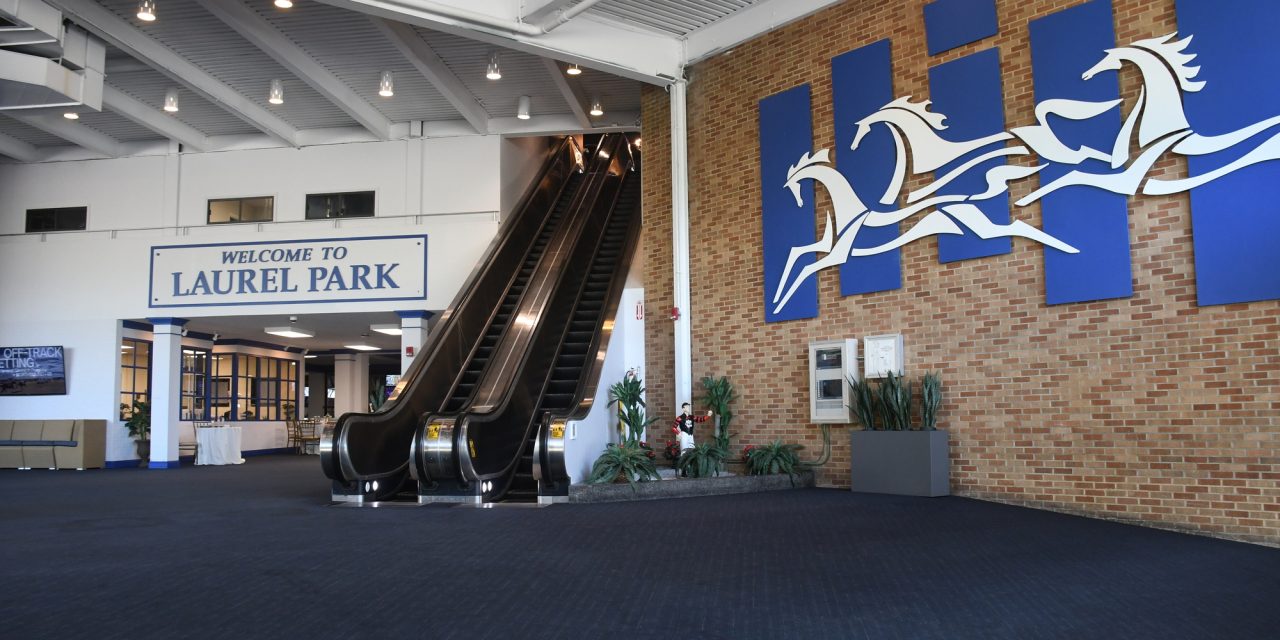By ANGELIQUE GINGRAS
LAUREL, Md. – Laurel Park’s horse racing future hinges on a proposal to be made to the Maryland General Assembly next month that could alter Thoroughbred racing in the state as we know it.
A determination will come from the Maryland Thoroughbred Racetrack Operating Authority, a commission established by Senate Bill 720 in the 2023 legislative session, to make recommendations on the redevelopment of Laurel Park and Pimlico racecourses – the two most prominent, historic, but aging, Thoroughbred racetracks in the state.
Chairman Greg Cross, an experienced attorney with Venable LLP appointed to the racetrack operating authority in June, said the commission is tasked with assessing the conditions of the tracks and recommending a path forward for the industry.
While the commission has not confirmed it, all signs point to a scenario that would end more than 100 years of racing in Laurel– whether it’s turned into a training facility or closed as an equine center altogether.
“There has not been enough money to redevelop both tracks based upon what the legislature has authorized,” Cross told Capital News Service. “The Preakness is in Baltimore and it’s going to stay in Baltimore, and so we have to put ourselves in a position to be a good host to the Preakness, and then we have to figure out what money we have left and what we can do with that money most efficiently.”

Pimlico racetrack nearly closed in 2019, when, weeks before the Preakness Stakes, the deterioration of its grandstands made them unusable. (Jay Cannon/Capital News Service)
The state has authorized $375 million to renovate the race courses.
Craig Fravel, executive vice chairman of 1/ST Racing and Gaming, a division of The Stronach Group that owns Laurel Park and Pimlico, told Capital News Service, “Ultimately Laurel would be transitioning away from both racing and training in all likelihood.”
Closing Laurel would end 112 years of racing history at the track, and change the course of a pastime that dates to pre-Revolutionary War days. The Maryland Jockey Club, which runs the state’s Thoroughbred tracks, was founded in 1743, followed by the first official Thoroughbred horse race two years later.
Baltimore’s Pimlico Race Course – the second-oldest racetrack in the nation behind Saratoga Race Course in Saratoga Springs, New York – opened in 1870 and celebrated its 148th running of the Preakness Stakes in May. The Preakness is the state’s premier horse race and the second leg of the most famous Thoroughbred racing series in the U.S. – the Triple Crown.
Anne Arundel County’s Laurel Park, home of the Maryland Million, debuted in 1911, followed by a number of other racecourses over the years, including Bowie and Marlboro race tracks in 1914 and Rosecroft Raceway in 1949 – all of which have since closed. Ocean Downs, a harness track, and Timonium racecourses still run seasonal races.
But the heyday for horse racing has long since passed.
Pimlico and Laurel Park are both well overdue for renovation. Some facilities, including the clubhouse, backstretch and grandstands date back to the mid-20th century. In fact, Pimlico was forced to close a portion of its grandstand weeks before the Preakness in 2019 over concerns of its deterioration. The degeneration of the tracks – not to mention the decrease in revenue amid the pandemic and the rise of online sports betting – has led to declining participation, attendance, and prestige.
“With the old, dilapidated, antiquated facilities, you don’t attract some of the bigger and better outfits,” said Tim Keefe, president of the Maryland Thoroughbred Horsemen’s Association. “It’s very important for the livelihood and longevity of the sport in Maryland to upgrade its facilities.”
This isn’t the first time that Maryland has considered consolidating its racing industry.
According to a 1949 Associated Press article, former Maryland governor William Preston Lane Jr. withdrew his support of a bill to close Pimlico and move all racing days to Laurel, because there was overwhelming public support for keeping the then-79-year-old Baltimore facility running.
Fast-forward 70 years to a near-identical circumstance, when in 2019, The Stronach Group considered moving the Preakness Stakes to the Anne Arundel County site because the conditions at Pimlico were too deteriorated to continue hosting the second leg of the Triple Crown.
This, in turn, prompted the City of Baltimore to file a lawsuit against the owners, The Stronach Group and its affiliates, to obtain Pimlico through condemnation. The lawsuit was dropped in the subsequent months, and the owners reached an agreement to keep the Preakness in Baltimore.
In 2020, the Maryland Stadium Authority was brought in to assess the planning, design, and construction of the Laurel Park and Pimlico facilities. The Racing and Community Development Act of 2020 authorized the MSA to finance up to $375 million to redevelop both parks – a sum equal to the original cost of moving everything to Laurel the year before.
It quickly became clear that conditions at both sites would require more than the estimates to rehabilitate, particularly with costs worsened by pandemic supply chain issues.
“We worked with the stakeholders for two and a half years, coming up with different plans that they wanted for the horse industry and Stronach,” said Gary McGuigan, executive vice president of the Stadium Authority. “We provided cost estimates for all those ideas and they all came in vastly over what the statutory limit is for the bonds.”
After two years without a shovel in the ground, new legislation was proposed in 2022. House Bill 897 required the Stadium Authority and the Maryland Economic Development Corporation to report to the Maryland General Assembly on the feasibility of renovating Laurel and Pimlico with the new cost estimates.
That’s what turned the tables back on Laurel.
“The cheapest scenario was $100 million over budget, and that was Pimlico redeveloped (to) be training and racing, and have Laurel just be a training facility,” said McGuigan. “We can’t do anything unless the state authorizes some more money.”
The economic development corporation’s report pushed Laurel to the edge.
Its Sept. 2022 feasibility report to the General Assembly rated components of the Laurel facility either “poor” or “bad,” including the clubhouse and grandstand roofs, HVAC, plumbing and electrical systems. The corporation determined that “the structures at Laurel do not warrant additional investment and demolition is the next logical step.”
The racetrack operating authority has been holding frequent meetings with the state’s top racing affiliates to gather recommendations for its final report. At a Sept. 29 meeting, The Stronach Group and the Maryland Jockey Club called the redevelopment of Pimlico as the future home of Maryland racing a key consideration for the Authority.
“The idea of there being one racetrack in the state of Maryland is not something that is unique or unusual,” said 1/ST’s Fravel at the Sept. 29 meeting of the racetrack operating authority. “Simply put, because it’s so expensive to maintain these facilities and operate them, we need to find better and more efficient models.”
Despite the mounting criticism of Laurel, the support for shifting to Pimlico isn’t universal.
“The idea that Laurel won’t be a part of the big picture moving forward concerns me very much,” said Keefe, of the Maryland Thoroughbred Horsemen’s Association. “But change is difficult for everyone… and if the reality is that way, we have to move forward. I’m confident that in some respect we will be able to adjust.”
Outside Laurel, the panel is considering other ideas, including the renovation of the training center at the former Bowie Race Track or breaking ground on newer sites.
The racetrack operating authority’s report must be submitted to the General Assembly by Dec. 1. After the recommendation is made, it will be up to the General Assembly to lay out plans for its implementation.
“I’m confident with the abilities of this racing authority that (the plan) will move forward in some way, shape or form,” said Keefe. “It wasn’t going anywhere prior to the implementation of the Authority. I’m confident that it’s because of the leadership with Greg Cross and the rest of the team that the governor has appointed to this authority that something will move forward.”




Recent Comments